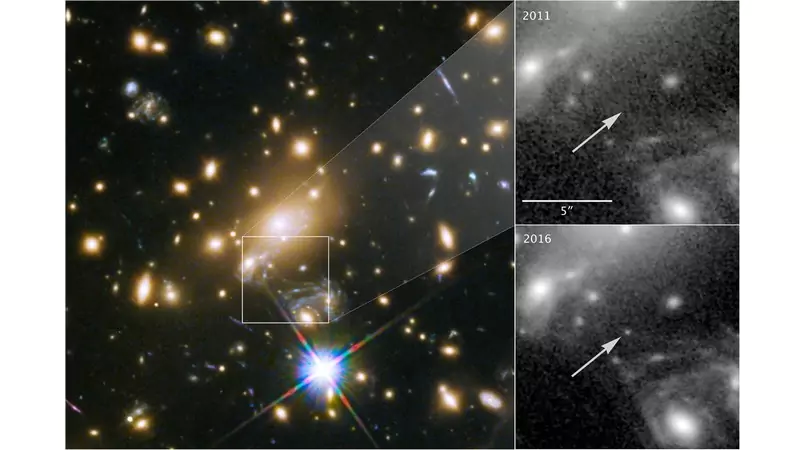
Setting another separation record, cosmologists utilizing NASA’s Hubble Space Telescope have found a gigantic blue star nicknamed “Icarus”, the most distant individual star at any point seen.
They additionally utilized Icarus to test one hypothesis of dull issue and to test the make-up of a closer view system group, the US space organization said on Tuesday.
“This is the first occasion when we’re seeing an amplified, singular star. You can see singular cosmic systems out there, however this star is no less than 100 times more remote away than the following individual star we can think about, with the exception of supernova blasts,” clarified Patrick Kelly, contemplate pioneer from University of Minnesota, Twin Cities.
The star, harbored in an extremely inaccessible winding cosmic system, is so far away that its light has taken nine billion years to achieve Earth.
Icarus, whose official name is “Macintoshes J1149+2223 Lensed Star 1”, is unmistakable on the grounds that it is being amplified by the gravity of a monstrous universe bunch – situated around five billion light-years from Earth.
In gravitational lensing, gravity from a frontal area, gigantic group of cosmic systems goes about as a characteristic focal point in space, bowing and opening up light.
The revelation of Icarus through gravitational lensing has started another path for space experts to contemplate singular stars in far off cosmic systems.
These perceptions give an uncommon, point by point take a gander at how stars advance, particularly the most radiant stars, NASA said.
Identifying the enhancement of a solitary, pinpoint foundation star gave a one of a kind chance to test the idea of dim issue in the group.
Dull issue is an undetectable material that makes up the vast majority of the universe’s mass.
At the point when NASA’s James Webb Space Telescope is propelled, stargazers hope to discover numerous more stars like Icarus.
“Webb’s exceptional affectability will permit estimation of considerably more points of interest, including whether these removed stars are turning. Such amplified stars may even be observed to be genuinely normal,”
NASA included.